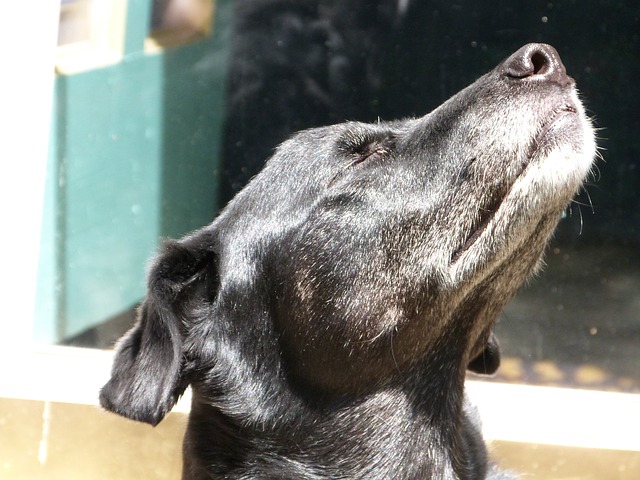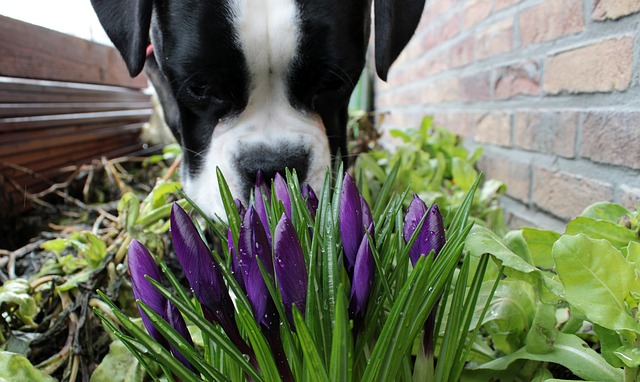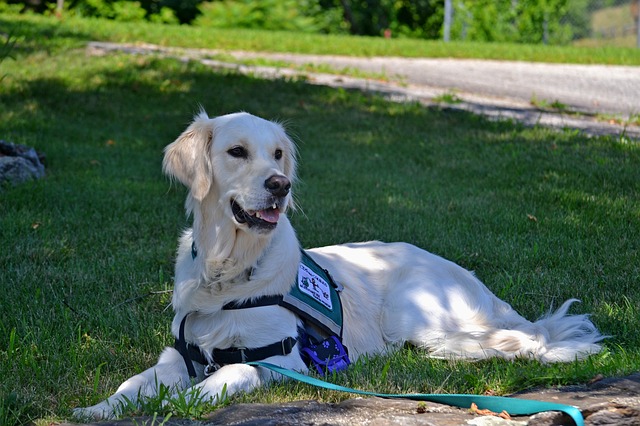
According to the experts, dogs “see” the world through their noses. While most people depend on sight, a dog’s scent skills are their primary way of experiencing their surroundings.
“They might look at someone with their eyes; as you approach, they look at you,” world renowned dog cognition specialist, Alexandra Horowitz says. “But then once they’ve noticed that there’s something with their eyes, they use smell to tell that it’s you.”

Through vision, humans are able to take in what is currently around us. Dogs, on the other hand, smell everything previously and currently in their environment as well as what is to come! In this way, their powerful sense of smell allows them to “travel through time.”
A dog’s scent skills begin with the intricate anatomy and physiology of their nose:
- The wet, spongy tissue of the nose is designed to trap odors.
- The little slits on the sides of each nostril allow them to kick up even more scent molecules when they exhale.
- Each nostril can detect different scents, allowing them to determine info like the direction of a smell and more.
- They have two different flow paths when they inhale, one for olfaction and one for respiration.
- Their noses contain 60 times more “olfactory receptor cells” than humans – 300 million to our 5 million.
- They have a cluster of sensory cells called the vomeronasal organ that deciphers information from scent molecules.
- The brain’s olfactory bulb that processes scent is 40 times larger in dogs than in humans.

Dogs can be trained to utilize their scent skills in impressive ways.
We have all heard of tracking dogs, cadaver dogs, police drug-sniffing dogs, and military bomb-sniffing dogs. In addition to these jobs, some super sniffers can be trained to perform lesser known tasks like locating truffles, detecting changes in human body chemistry, and uncovering hidden pests.
In a relatively new use of their exceptional noses, some dogs are even being trained to detect cancer in humans. The dogs of the non-profit In Situ Foundation can sense trace amounts of cancer cells in human urine, saliva or expelled breath. They use their incredible noses to detect multiple types of cancer in parts per trillion – similar to sensing a single drop of blood in an Olympic-sized swimming pool.

How can you help your dog hone his skills?
Now that you know the real world applications for a dog’s scent skills, let’s cover a few simple ways you can strengthen those talents in your own pup.
Scent Games:
When introducing a dog to scenting games, you want to start slow and simple. Professional dog trainer, Kathy Santo recommends the following four activities:
- The “Which Hand?” Game. Place your hands behind your back and grasp a high reward treat in one fist. Show your dog both closed fists and have him sniff out the hand with the treat. Do this repeatedly, switching up which hand has the reward.
- The Shell Game. With your dog out of the room, hide a treat underneath one of three plastic cups. Bring your dog in, tap each cup, and ask him to “Find it!” When he finds the correct cup, flip it over and give him his reward along with lots of praise. Santo recommends using heavier cups or bowls if your dog simply knocks over the cups rather than using his nose.
- The Blind Shell Game. Once your dog masters the basic shell game, try playing in the dark to further encourage him to use his scenting skills only.
- The Double Blind Shell Game. In this version of the shell game, a friend sets up the cups to prevent you from unintentionally leading your dog to the prize.
Nose Work:
Canine nose work encourages dogs to use their natural prey drive and scenting skills. The techniques are based on those used to train narcotics and explosives detection canines, but your pup does not have to be a pro to participate. In fact, nose work may be particularly beneficial for seniors, dogs recovering from surgery, and those with certain behavioral problems. Better still, it is a wonderful way to strengthen the human-animal bond.
Earth Dog:
This activity is perfect for Dachshunds, terriers, and small dogs that love to dig in search of critters. Earth Dog is non-competititive. Clubs gather to assess their dogs’ ability to seek and locate rodents underground. Don’t worry – the rats are kept in cages and not harmed by the participants!
Tracking:
Put your dog’s scent skills to the test with tracking competitions. These events are quite similar to the training work search and rescue dogs use to strengthen their technique. Handlers lay out a scent trail, allow it to “age” for at least 30 minutes, and then head out with their pooches in the lead!
Sniff Diggy™ Fun Mental Stimulation Nose Work Mat:
Work on your dog’s scent skills in the comfort of your own home with the unique, colorful Sniff Diggy Nose Work Mat. This innovative toy challenges dogs to hunt and forage for their snacks just like their wolf ancestors!
How it works:
- While your dog is in another room or preoccupied with a different activity, tuck his or her favorite treats into the nooks created by the fabric strips of the mat. Pat the strips down to conceal the treats. Be sure to set one treat aside. Small treats work best.
- Once done, have your dog sit and smell the treat you saved and then hide it in the mat while your dog continues to sit nearby.
- Let your dog go at it! You can also use small toys to hide in the fabric strips.
Want to up the ante and make the game even more challenging? Sniff Diggy Nose Work Mats are modular, so you can connect them together and maximize the fun!
Sources:
Business Insider: Dogs see the world very differently from human beings — here’s how it works
Mother Nature Network: Dogs see the world through their noses
American Kennel Club: Dog Sports & Events
The post Hone Your Dog’s Scent Skills So He Can “See” The World Through His Nose appeared first on iHeartDogs.com.
from iHeartDogs.com https://ift.tt/2EHITRy data:image/svg+xml,%3Csvg%20xmlns='https://ift.tt/31eOmHf




No comments:
Post a Comment